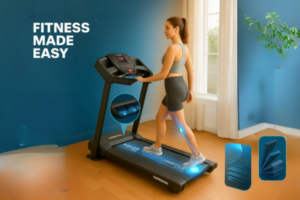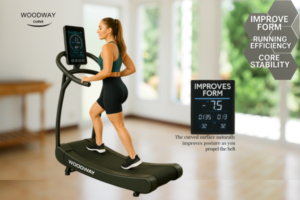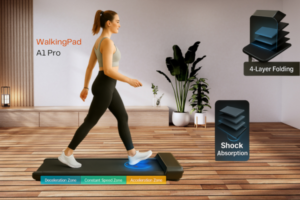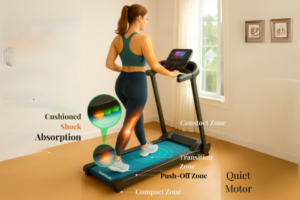Your First Step Toward Recovery
Walking on treadmill after PCL ORIF can feel like a distant goal right after surgery. The healing journey itself is not an easy task. And the idea of walking again- particularly on a treadmill may be an exhilarating and frightening concept to many. This how-to walking on treadmill after PCL ORIF tutorial in 2025 will take you step-by-step, through what you need to know about the process. Expert opinions, treadmill comparisons, personal experience and physiotherapy tips are only the few of personal recommendations you might find in this guide that is the complete source of safe and confident rehabilitation.
Who Should Read This? (User Personas)
Understanding who this article is for can help determine how useful it will be in your journey:
- 👩⚕️ Surgical Recovery Patients: If you’ve recently undergone PCL ORIF surgery and are in the process of regaining mobility, this guide is made for you.
- 🏋️ Athletes Returning to Sports: Active individuals looking to ease back into training safely with low-impact cardio like treadmill walking.
- 👩💼 Busy Professionals: Those juggling work and rehab who prefer home-based recovery options.
- 👵 Older Adults: Elderly people who need joint-friendly rehabilitation without having to walk through rough surfaces outdoors.
- 💡 First-Timers: If you’re new to the world of post-op rehabilitation and want clear, actionable advice.
What Is PCL ORIF & Why It Matters for Walking
Understanding the Injury
The Posterior Cruciate Ligament (PCL) lies at the back of the knee and stabilizes the tibia against excessive backward movement. It is a very essential structure to both athletes and walkers. The trauma that leads to injuries of this ligament may involve accidents with high impact such as collision or falling or sport accidents.
What is ORIF?
ORIF stands for Open Reduction and Internal Fixation. This method is applied where there is a ligament tear including pieces of bones. The orthopedic surgeon aligns the bones again and fixes them by means of metal plates, rods or screws during surgery.
dic surgeon repositions the bones and secures them using metal plates, rods, or screws.
Why Is Walking Challenging Post-ORIF?
Post-surgery, patients often face:
- Pain and stiffness
- Limited range of motion (ROM)
- Muscle weakness
- Fear of re-injury
This is where walking on a treadmill after PCL ORIF becomes a key component of recovery—providing a controlled and safe environment to rebuild confidence and mobility.
Expert Opinions – What Surgeons & PTs Recommend
“Treadmill walking is excellent for retraining gait mechanics post-ORIF. It must, however, be introduced at the right stage and with proper guidance.” – Dr. Lara Jenkins, Orthopedic Surgeon
“The biggest mistake patients make is using incline too early. Always begin flat and slow, ensuring your ROM is nearly full.” – Nathan Cole, Senior Physiotherapist
“Early weight-bearing without adequate muscle control can delay healing. Side rails and low speed are essential tools in this phase.” – Priya Tandon, Rehab Specialist
These expert insights prove that walking on treadmill after PCL ORIF is effective—but only if done at the right pace and stage of recovery.
Can You Walk on a Treadmill After PCL ORIF?
The Straight Answer
Yes, walking on treadmill after PCL ORIF is possible, but only after certain healing milestones are met.
Why Not Immediately?
During the first 3–5 weeks post-op, your joint and surrounding tissues are still fragile. You’re more vulnerable to:
- Screw loosening
- Re-injury due to imbalance
- Overuse swelling
When Can You Start?
Most patients begin flat-surface treadmill walking during weeks 9–12, depending on:
- Their individual recovery rate
- Presence or absence of pain and swelling
- Quad and hamstring strength
- Clearance from a licensed PT or surgeon
5 Clear Signs You’re Ready for Treadmill Walking
- ✅ Swelling is Controlled: Minimal puffiness or inflammation around the knee
- ✅ Range of Motion is Pain-Free: Able to bend and extend the knee without discomfort
- ✅ Recovery of Muscle Mass: To activate particularly your quadriceps and hamstrings
- ✅ Full Weight-Bearing Without Limp: You can stand and walk short distances independently
- ✅ Professional Clearance: Your healthcare provider gives explicit approval
These five markers act as green lights to move toward treadmill walking confidently.

My Recovery Story – Personal Review
I was overwhelmed after my PCL ORIF surgery. Even standing was scary. But by Week 10, I was cleared for treadmill walking. Here’s how my journey unfolded:
What Helped Me Most
- Consistency over intensity
- The Therun Treadmill with safety rails and a soft deck
- Daily logs to track improvements
- Compression sleeves to manage swelling
Mistakes I Made
- I increased speed too soon—this led to soreness and minor regression.
- I neglected proper footwear during early walks, which caused arch pain.
Milestones I Achieved
- Week 10: 5 minutes slow-paced walk
- Week 13: 10 minutes with mild incline
- Week 16: 25 minutes at 2.5 mph
What Makes Treadmill Walking So Effective (WOW Factor 🚀)
Treadmill walking isn’t just another form of cardio—it’s a controlled rehab tool that offers:
- 📉 Lower Impact: Shock-absorbing belts prevent joint stress
- ⌚ Progress Tracking: See your time, distance, and improvement
- 🎵 Engagement: Pair your session with music, podcasts, or TV
- 🧠 Mental Focus: Clear and consistent movement boosts confidence
- 🔁 Gait Training: Helps establish normal walking patterns post-surgery

The Right Way to Use a Treadmill After PCL ORIF
Do’s:
- ✅ Start slow—0.5 to 1.0 mph
- ✅ Use side rails
- ✅ Wear shock-absorbing shoes
- ✅ Walk for only 5–10 minutes initially
Don’ts:
- ❌ No incline in first 12 weeks
- ❌ Don’t walk if you feel pain
- ❌ Don’t skip warm-ups or cool-downs
Use a mirror or PT video call to check your form during early sessions.
Phase-Based Treadmill Progression Plan
| Phase | Weeks | Goal | Activity |
|---|---|---|---|
| I | 0–4 | Protect | No treadmill; focus on ROM & quad sets |
| II | 5–8 | Activate | Gentle weight-bearing, basic home movements |
| III | 9–12 | Begin | Flat-surface treadmill walking, slow pace |
| IV | 13+ | Advance | Introduce incline, longer sessions |
Treadmill vs Outdoor Walking – Which Is Safer Post-PCL ORIF?
| Feature | Treadmill | Outdoor |
|---|---|---|
| Surface | Cushioned, flat | Uneven, hard |
| Speed Control | Manual & adjustable | Unpredictable |
| Weather | Controlled indoors | Unreliable outdoors |
| Balance Support | Side rails | None |
Top 5 Treadmills for PCL ORIF Recovery (Product Comparison Table)
| Treadmill | Best For | Key Feature | Price (USD) | Verdict |
|---|---|---|---|---|
| Therun Treadmill | Budget Rehab | Cushioned deck, quiet motor | $499 | ✅ Best value for recovery |
| NordicTrack T 6.5S | Features & Fitness | iFit subscription, incline | $1,299 | 💡 Ideal for fitness goals too |
| Woodway Curve | Elite Clinics | Motorless, curved deck | $8,000 | 🏥 Premium, not home-friendly |
| WalkingPad A1 Pro | Small Spaces | Compact, remote-controlled | $379 | 🏠 Great for apartments |
| Horizon T101 | Beginners | Safety rails, wide deck | $649 | 👌 Safe & simple choice |
Each has pros/cons. Choose based on budget, space, and stability needs.

What Sets These Treadmills Apart? (5 Differentiators)
- Shock-absorbing deck – Reduces joint impact significantly
- Slow-speed startup – Perfect for post-surgery patients
- Side rails – Adds safety for unsteady legs
- Emergency stop feature – Safety net during balance loss
- App or remote control – Helps in starting sessions without bending
Transparent Review – My Honest Thoughts on Therun Treadmill
👍 Pros:
- Quiet and stable
- Reasonably priced
- Easy to fold and store
👎 Cons:
- No advanced tracking
- Lacks incline settings for later stages

Price Comparison – How Much Should You Expect to Spend?
| Brand | Price | Worth It? |
|---|---|---|
| Therun | $499 | ✅ Yes, great rehab option |
| NordicTrack | $1,299 | 💡 Yes, for tech-savvy users |
| Woodway | $8,000 | 🏥 Only if you’re in a clinic |
| WalkingPad | $379 | ⚠️ Compact but less stable |
| Horizon | $649 | ✅ Yes, balanced features & price |
Common Mistakes to Avoid
- ❌ Walking too soon without PT advice
- ❌ Ignoring swelling or pain signs
- ❌ Not wearing proper footwear
- ❌ Overreliance on one leg
Always follow professional advice when starting walking on treadmill after PCL ORIF, especially to avoid these pitfalls can speed up your progress..
Pro Tips from Physiotherapists
- 📘 Keep a recovery log
- 🦵 Include daily quad sets
- 📲 Use a timer for short sessions
- 🧘 Try breathing exercises post-walk
- 📸 Record your gait for feedback
FAQs – Walking on Treadmill After PCL ORIF
Q1: Can I start treadmill walking in Week 6?
A: Not unless your surgeon gives the go-ahead.
Q2: What’s the safest speed post-surgery?
A: Start with 0.5–1.0 mph on flat mode.
Q3: Should I choose a treadmill with rails?
A: Yes, especially for early recovery.
Q4: When is incline walking safe?
A: Not before Week 13–15, and only with PT advice.
Q5: Is a foldable treadmill reliable?
A: Yes, if it’s stable and cushioned.
Final Thoughts – Be Patient, Be Consistent
Recovery from PCL ORIF is not linear. There will be good days and slow ones. But with the right tools and mindset, walking on a treadmill after PCL ORIF becomes a powerful part of your healing.
- 🧠 Trust the process
- 🦵 Celebrate small wins
- 🏃 Stay consistent
Each step is a stride toward full strength.
Disclosure
This article contains affiliate links. If you purchase through them, I may earn a small commission—at no extra cost to you. I only recommend what I believe in and personally use or thoroughly research.
References
- Rajani A. et al. (2023). “Case Study on PCL Avulsion with Internal Fixation Rehabilitation.” Journal of Ortho Case Reports.
- T. Comella (2022). “PCL Injury Rehab Overview.” Physio Dynamic Reports.
- Kew ME, Cavanaugh JT (2023). “Return to Play after Posterior Cruciate Ligament Injuries.” SportsMed Clinical Bulletin.
